Goldfish Selecting and Rearing - Scale Types By Dave Mandley (1/4)
The use of this written material and photos not are permitted without authors written permision.
My goal is to explain why breeding sibling fish produces different and unforeseen results. There are three recognized scale groups and then sub groups to each category. The metallic scale group, the matte scale group and the nacreous scale group. The first two groups are homozygous to their type and the nacreous is heterozygous to its type. A matte gene to a matte gene produces a homozygous MATTE scale group. Same with metallic but the Nacreous scale type is produced from one matte and one metallic gene, or heterozygous. Nacreous fish then produce in their offspring 50% nacreous, 25% matte and 25% metallic offspring,in a pure strain. Photo # 1 Metallic..#2.Matte... Nacreous
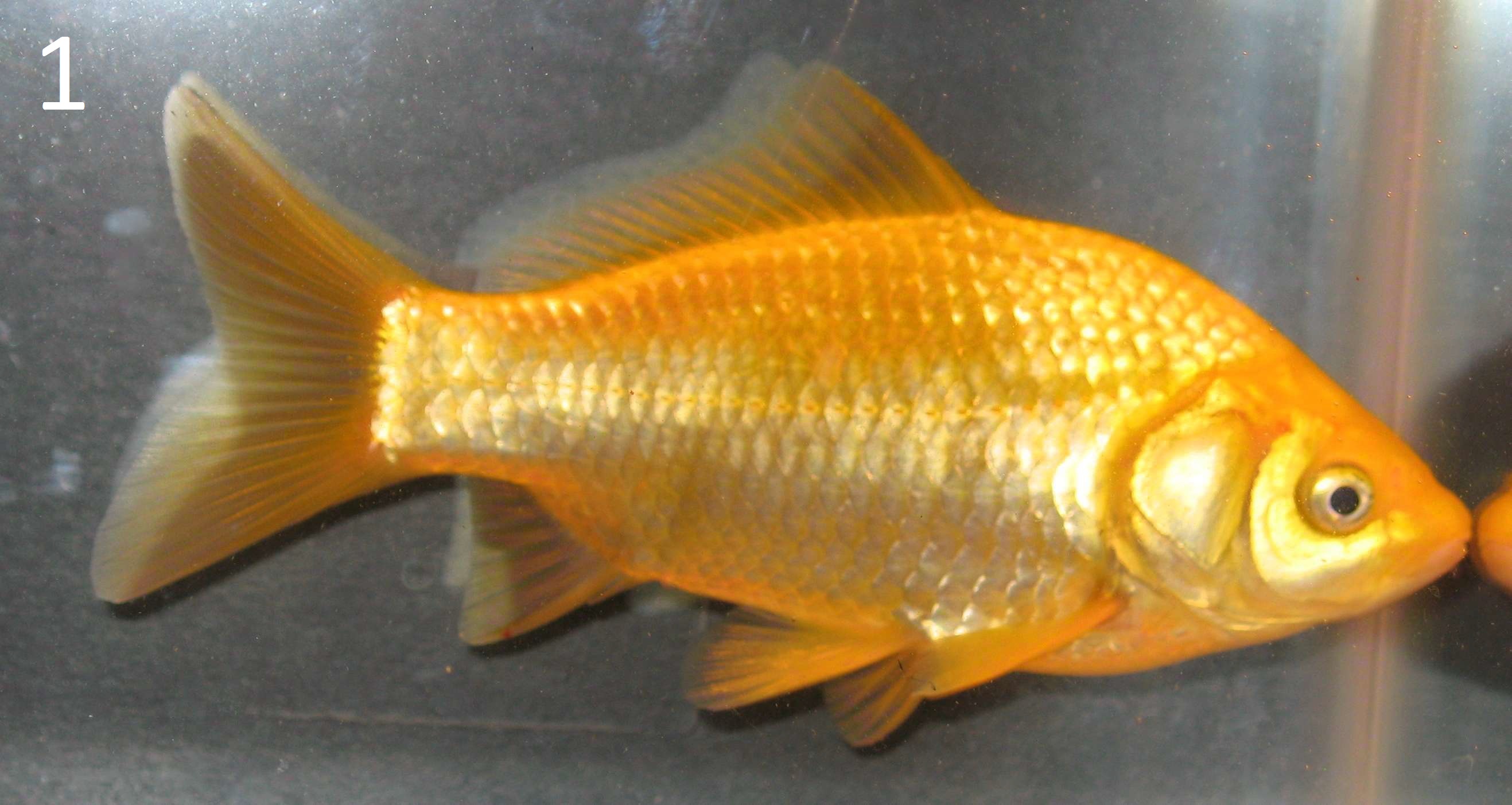
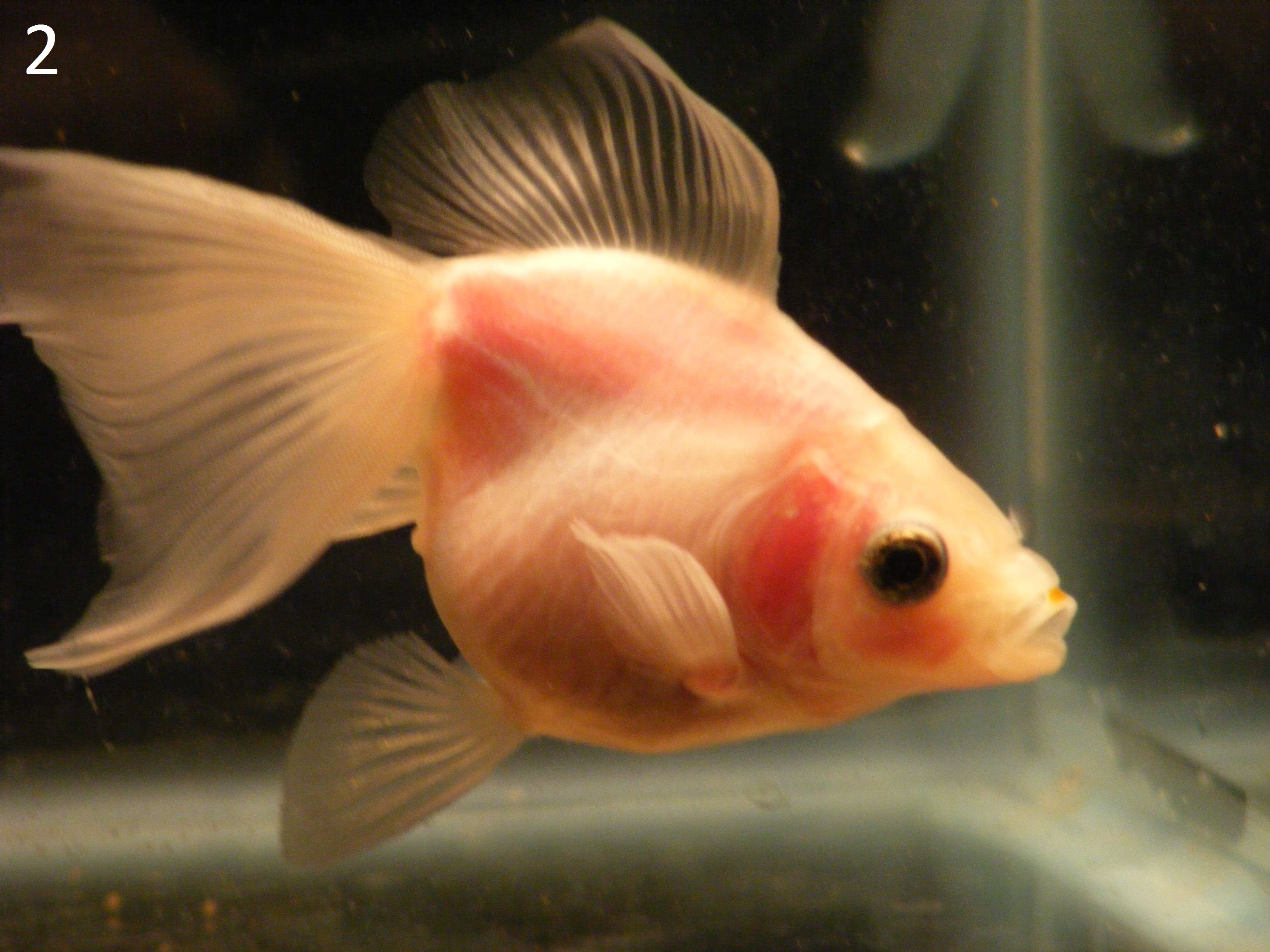
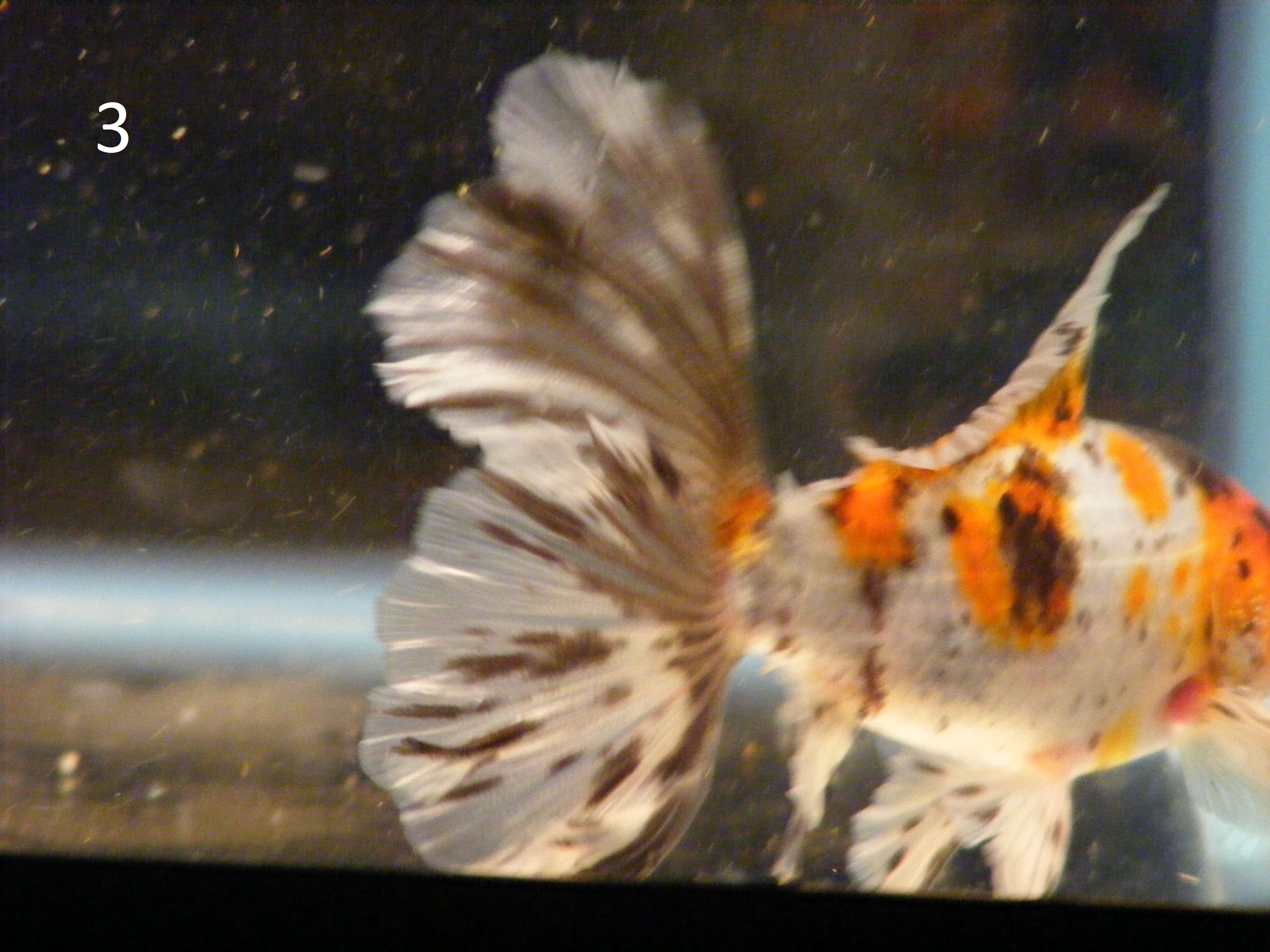
The metallic scale group. This is usually a solid scale that is highly reflective, giving a sheen as it reflects light Metallic scaled fish from metallic parents carry a demelonizing gene that at some age turns the normally olive green fry to the color of the parent or one of the parents. All metallic fish are born with color but have a melanin sheath covering their color. When this is shed at an early age is good for commercial fisheries. Brood stock is picked for this quick turn around. Philly veils have been reported to keep their olive color into the second year before coloring. When different strains are crossed this demelonizing is usually set back to a slow process.Their is always exceptions to natures rules. True chocolates and line bred redcap orandas are born white. The metallic fish in a nacreous spawn USUALLY do not demelonize and remain uncolored till death or at least longer than most fish keepers keep them. The gene for color change is either suppressed or lacking. Already apattern is developing about the use of a true metallic fish and a nacreous produced metallic fish, each one brings different baggage to a spawn.

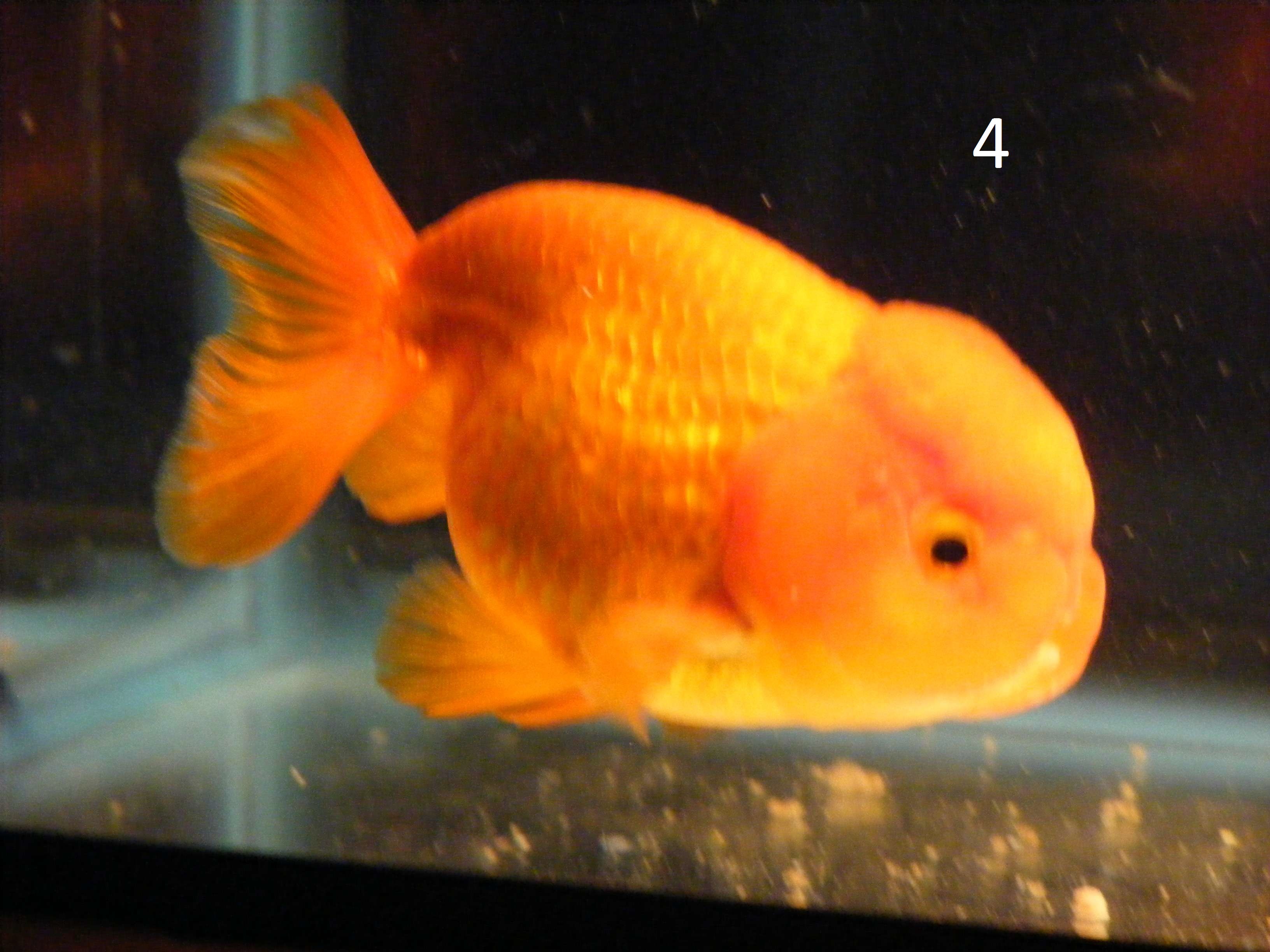
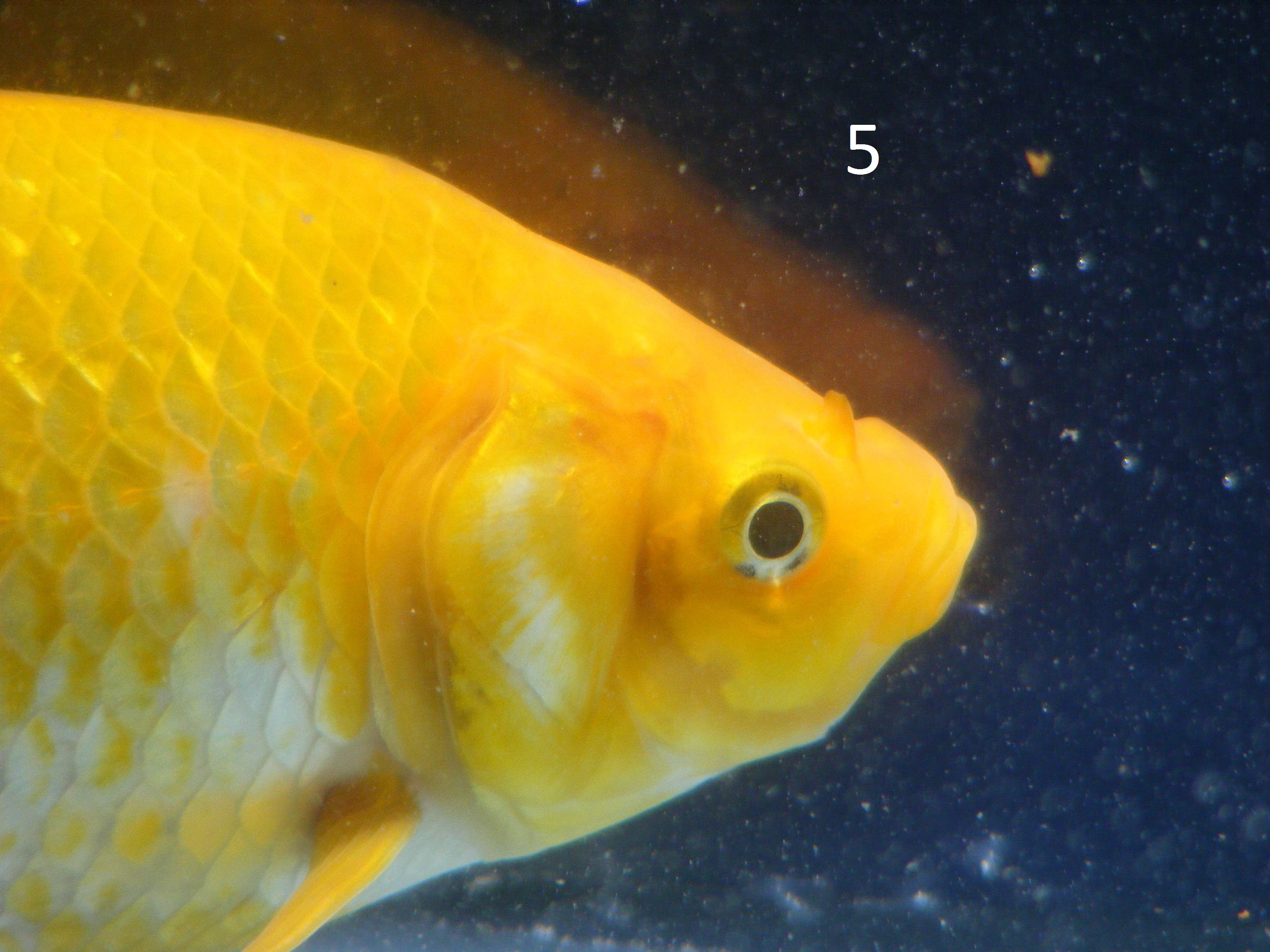
The Matte scale group are fish with transparent scales. The usual matte is called a pinkie matte fish. It is virtually transparent with no reflective scales. With almost no guanine in the scale this has been linked to a weak fish very difficult to grow to size. The matte scale is produced from a nacreous spawn and used to cross to its sibling metallic to produce 100% nacreous offspring. The matte fish carries all the colors genetically but USUALLY expresses none of them. The matte is homozygous for its trait. The use of matte to metallic for reproducing nacreous is not understood or in use by the American farms. It is difficult to maintain mattes to adult hood for this cross ,plus they have to be separated by sex and same with the metallicís. This is costly and time consuming. This opened the door for the Camelot shubunkin that is a colored matte that is 100% self reproducing.

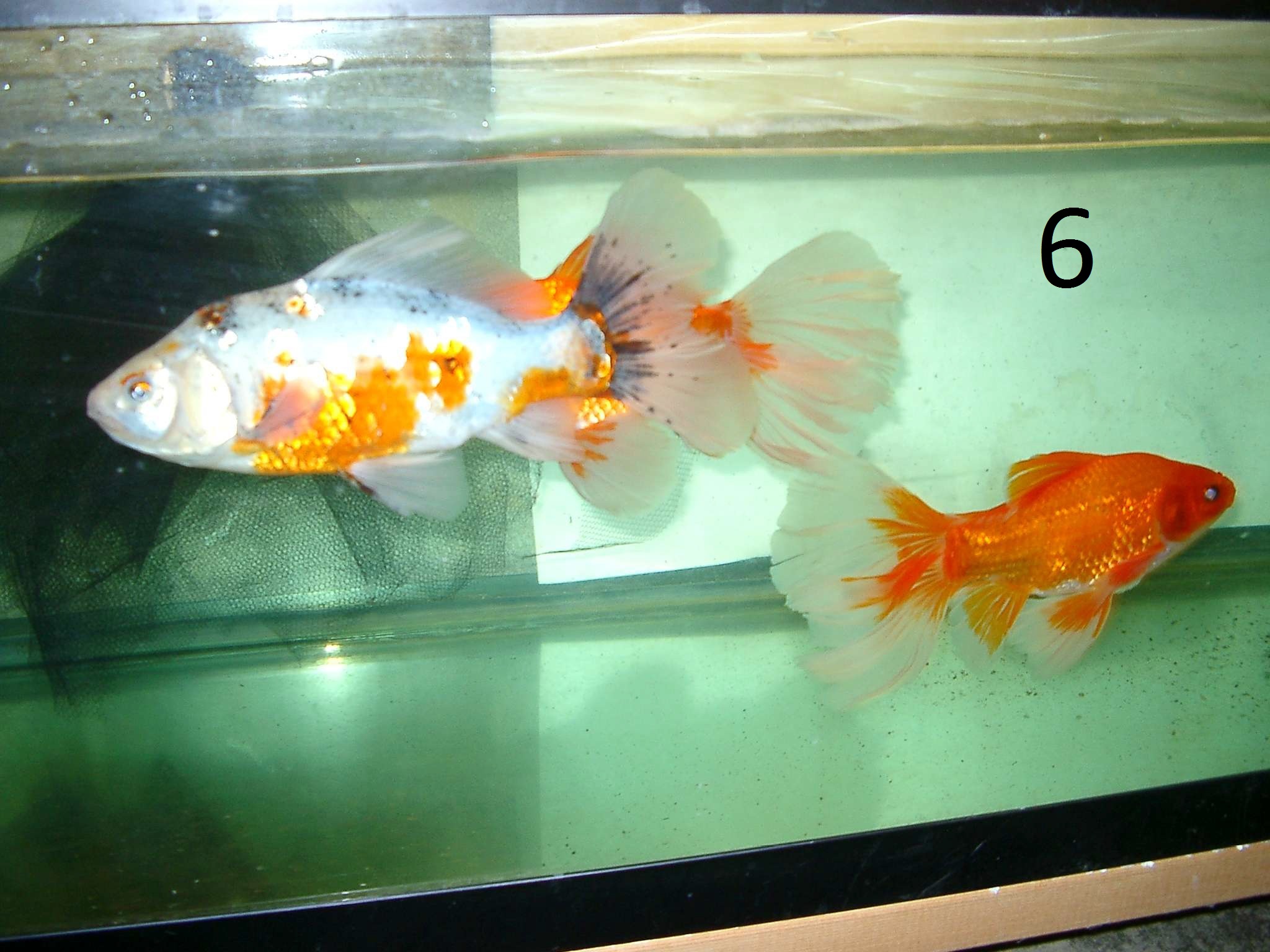
2 Pinkie matte
6 Camelot matte
The Nacreous or calico scale group is a heterozygous genetic anomaly. A nacreous fish is a blend of metallic solid scale to a matte transparent non reflective. The mottled scaling and usual coloring of such a fish resembles the old calico patterns and in most cases the fish are called calico. You can also use a nacreous to a nacreous for 50 % nacreous offspring or a metallic to a nacreous for 50% nacreous or a matte to a nacreous for 50% nacreous offspring. You can use a true metallic to a matte or a nacreous produced metallic to a matte. Metallic{either] to a nacreous will give you 50/50 split on type and other matte variants can be used to metallic variants. Again the pattern is developing that mixed genetics here will produce different results even though by sight it appears to be simple metallic/ matte crosses.


Variants.
We all know the basic scale groups buy do we know the sub groups.






